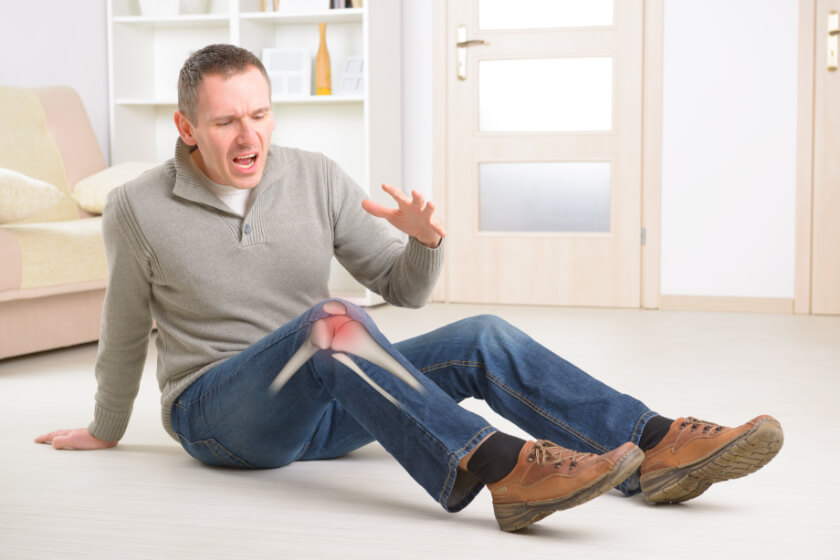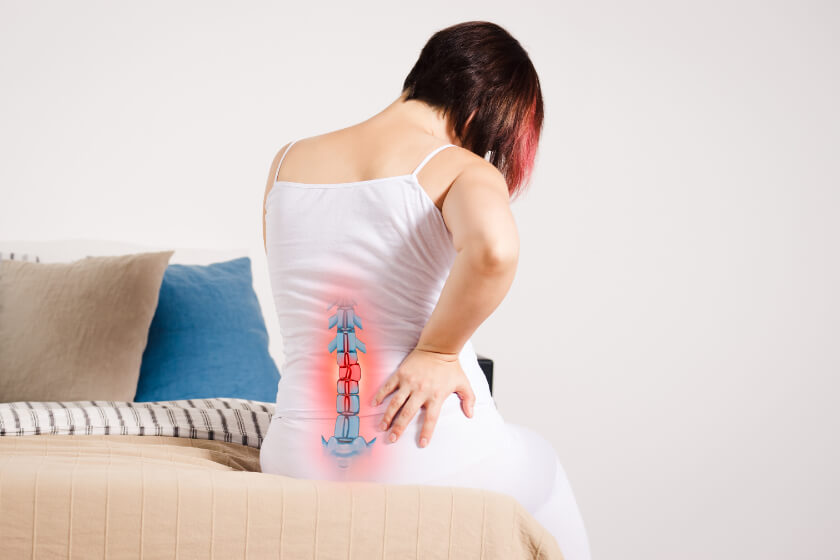

Everything You Need to Know about Osteoporosis – Before You Fall

Did you know that many people with osteoporosis don’t realize they have the condition until they break a bone? It’s true! Osteoporosis is one of the most common conditions that goes unnoticed until someone suddenly breaks a bone after a relatively mild fall. Fortunately, you can learn everything you need to know about osteoporosis, even before you fall. What’s better is that you can use this information to assess your risk for osteoporosis and reduce your risk for weakened bones long before you fall.
Things You May Not Know about Osteoporosis
Osteoporosis is a bone disease
Osteoporosis is a disease that weakens your bones and leaves you more vulnerable to sudden and unexpected broken bones. The word osteoporosis means “porous bone.”
Calcium, phosphorous, and other minerals give bones mass and strength – the more minerals the bones contain, the higher their mass and strength. Medical professionals discuss the presence of the minerals in terms of bone mass, which is the amount of these minerals in a certain volume of bone. High bone mass results in strong, fracture-resistant bones while low bone mass leaves bones vulnerable to fracture.
Low bone mass is the main characteristic of osteoporosis. In this condition, your bones do not contain enough minerals to keep them resistant to fracture. Certain bones, such as the bones of the hip, spine, and wrist, are most likely to break if you do happen to fall.
Bones get weak over time
Bones are in a constant state of renewal – the human body breaks down old bone tissue and replaces it with new bone tissue. When we are young, our body creates new bone tissue faster than our system breaks down old bones, thereby boosting the mass and strength of our bones. As we get into our late 20s, however, the production of new bone slows down. Most of us reach peak bone mass by about the age of 30; after that, we begin to lose more bone than we produce.
Your risk for osteoporosis depends largely on the amount of bone mass you gained in your youth and the level of your peak bone mass – the higher your peak bone mass, the more bone mass you can have “in your bank” as you get older.
You may not notice symptoms of osteoporosis at first
Osteoporosis is a silent disease, which means it can develop and worsen before you even realize your bones are getting weak. In its early stages, osteoporosis may not cause any symptoms at all. In fact, many people with osteoporosis don’t know they have the condition until they fall and break a bone.
Osteoporosis is progressive, which means your bones get weaker over time. As the condition progresses, you may notice signs and symptoms, such as:
- Back pain resulting from a collapsed or fractured bone in the spine, known as vertebra
- Loss of height over time
- A stooped or bent-over posture
- A bone that breaks suddenly or much more easily than you or a doctor might have expected
Osteoporosis is more common than you might think
More than 53 million Americans either already have osteoporosis or are at higher risk for the condition because they have low bone mass, according to the National Institutes of Health (NIH).
While osteoporosis can occur in both men and women of any age, the condition is more common in older women. In fact, bone fragility plays a major role in the majority of all the hip and spine fractures occurring in older white women.
You need to know your risk for developing osteoporosis
Certain factors can increase your risk for developing osteoporosis. Some of these risk factors are unchangeable, while others are under your control.
Unchangeable risk factors include:
- Gender – women are more likely to develop osteoporosis than are men
- Age – the risk for osteoporosis increases with age
- Race – osteoporosis is more common in those of white or Asian descent
- Family history
- Body frame size – those with smaller frames are at greater risk
- Hormone levels
- Certain medical conditions
Changeable risk factors include:
- Dietary factors, such as low calcium intake
- Use of steroids or other medications
- Lifestyle choices, such as sedentary lifestyle or alcohol/tobacco use
You can prevent osteoporosis
Good nutrition and regular exercise can help keep your bones strong throughout life.
Osteoporosis can be treated
Your doctor can prescribe medications, such as bisphosphonates or denosumab, to treat osteoporosis. Other treatments may include hormone-related therapy, bone building medications, and lifestyle changes.
Your doctor can evaluate your risk for osteoporosis and bone fractures
Your doctor can assess your risk for developing osteoporosis and evaluate your risk for suffering bone fractures if you do happen to fall. During this assessment, your doctor will likely ask about your medical history and lifestyle, review your family history, and consider other factors that increase your risk for developing osteoporosis.
If you are at high risk for osteoporosis, your doctor may recommend densitometry, which is a special type of x-ray that measures bone loss. Also known as bone density scanning or dual-energy x-ray absorptiometry (DEXA), densitometry is a simple, quick, and non-invasive way to assess your risk for developing fractures.
For more information about osteoporosis and DEXA scans, consult with your doctor. The more you know about osteoporosis, the better you can protect yourself from bone fractures.





